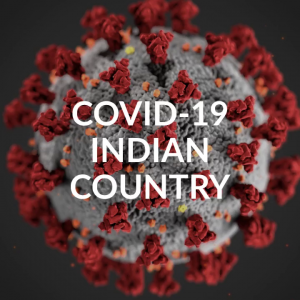
The Indian Health Service has updated its coronavirus data, showing results as of October 3, 2020.
According to the data, 52,912 tests have returned positive for COVID-19, the disease caused by the coronavirus. That represents an increase of 0.13 percent from the 52,843 cases previously reported by the IHS.
Altogether, 883,270 coronavirus tests have been administered through October 3, the data shows. That marks an increase of 0.77 percent from the day prior.
Overall, almost 6 percent of IHS coronavirus tests have returned positive, according to the data. But the rate is far higher in the Phoenix Area, where 13.7 percent are positive.
Next is the Navajo Area, which serves the largest reservation in the United States. But even with nearly 12.2 percent of tests returning positive, the rate has fallen steadily over the last couple of months, following a noticeable decline as the region with the highest rate.
The Tucson Area, which covers southern Arizona, shows a high positive rate of almost 8.2 percent. The high rates in these three regions indicate a disproportionate toll of the coronavirus among IHS patients in the state of Arizona.
On the other end of the spectrum, aggressive efforts in the Alaska Area are turning up very few cases. Out of 227,372 tests administered in Alaska, about 1.1 percent have returned positive, the data shows.
The data, however, is incomplete. While 100 percent of facilities run directly by the IHS are reporting data, only 33 percent of tribally managed facilities and 44 percent of urban Indian organizations are doing the same, the agency has told Indianz.Com.
The agency also provided to Indianz.Com the service population for 2019: 2,562,290. Based on that figure, almost 34.5 percent of American Indians and Alaska Natives have been tested for the coronavirus since the IHS began reporting data in March.
The IHS user population, on the other hand, is a much smaller number. As of 2019, 1,662,834 American Indians and Alaska Natives have lived within a service delivery area and have received health care at an IHS or tribal facility during the previous three years.
Based on the user population, 53.1 percent of Native Americans have been tested for the coronavirus since the IHS began reporting data in March.
COVID-19 Cases by IHS Area
Data are reported from IHS, tribal, and urban Indian organization facilities, though reporting by tribal and urban programs is voluntary. Data reflect cases reported to the IHS through 11:59 pm on October 3, 2020.
| IHS Area | Tested | Positive | Negative |
|---|---|---|---|
| Alaska | 227,372 | 2,454 | 203,497 |
| Albuquerque | 44,675 | 1,898 | 33,669 |
| Bemidji | 55,290 | 1,986 | 51,039 |
| Billings | 60,118 | 2,710 | 53,184 |
| California | 16,385 | 769 | 14,827 |
| Great Plains | 72,163 | 3,546 | 67,460 |
| Nashville | 28,590 | 2,083 | 25,531 |
| Navajo | 97,635 | 11,868 | 74,651 |
| Oklahoma City | 169,798 | 12,782 | 154,517 |
| Phoenix | 70,579 | 9,669 | 60,038 |
| Portland | 33,203 | 2,537 | 29,863 |
| Tucson | 7,462 | 610 | 6,742 |
| TOTAL | 883,270 | 52,912 | 775,018 |
Source: https://www.ihs.gov/coronavirus (Indian Health Service)
HHS Small Ambulatory Program Awards $55 Million to 15 Tribes and Tribal Organizations (Indian Health Service)
Indian Health Service Announces New Deputy Director for Quality Health Care and Enterprise Risk Management (Indian Health Service)
Federal Emergency Management Agency (FEMA)
White House Office of Management and Budget (Joe Biden Administration)
Tuba City Regional Health Care Corporation (Arizona, Navajo Nation)
Oklahoma City Indian Clinic (OKCIC)
Indian Health Service (Department of Health and Human Services)
Navajo Nation Town Hall (Arizona, New Mexico, Utah)
Navajo Nation (Arizona, New Mexico, Utah)
Tribal organizations statement on advance appropriations for Indian Health Service
Indian Health Service Statement on Advance Appropriations (Department of Health and Human Services)
Indian Health Service (Department of Health and Human Services)
Indian Health Service (Department of Health and Human Services)
Navajo Nation (Arizona, New Mexico, Utah)
